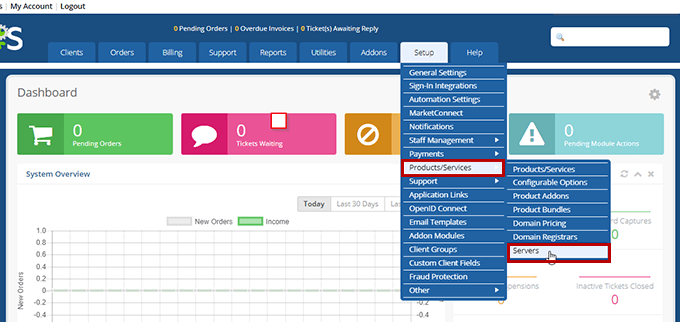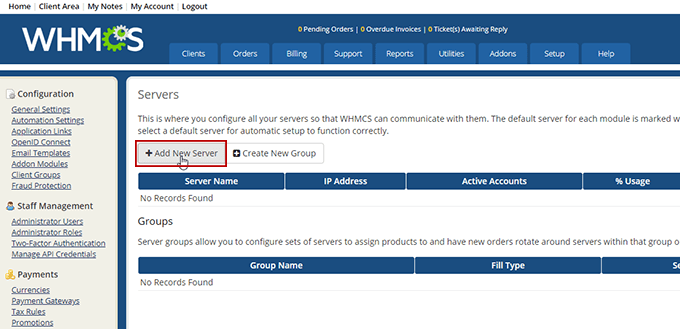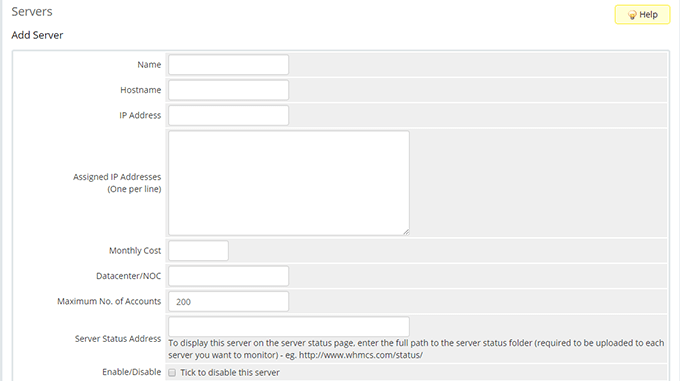Tag: Server
Top 15 Server Security Practices for 2020
In this article, we will denote the security best practices for 2020 and beyond. Because security is such a challenging subject for many, it often goes unheeded, and as such, many are caught unaware when an issue arises. By following these best practices, you can significantly lower your risk of being compromised by a malicious actor.
CentOS vs Ubuntu: 15 Factors to Consider!
Let the Battle Begin!
Today we will be reviewing the major differences between CentOS and Ubuntu in a web hosting environment. Although this is not a fully comprehensive analysis of every single aspect of the numerous in-depth features of each operating system, it should provide a solid overview which will allow you to choose which system is best suited for your needs. Without further ado, let’s jump right in…
Setting Up Your Liquid Web Server in WHMCS
- Log in to your WHMCS Admin dashboard
- Navigate to Setup -> Products/Services -> Servers

- If this is your first server in WHMCS, you will not see any servers or groups.
- You can create a group if you would like to add future servers to the group at a later date. The benefit of this is to have multiple servers to distribute clients. You can always add this at a later time.
- Select “Add New Server”

- Adding Your Server

What Is KernelCare?
 The concept of ‘Kernel hotpatching’, sometimes called live patching, was introduced to the Linux community around 2008. Soon after groups began developing differing implementations of the concept. KernelCare, one of the more popular implementations, was originally released in March 2014 by Cloud Linux, Inc.
The concept of ‘Kernel hotpatching’, sometimes called live patching, was introduced to the Linux community around 2008. Soon after groups began developing differing implementations of the concept. KernelCare, one of the more popular implementations, was originally released in March 2014 by Cloud Linux, Inc.
If you run a cPanel server, and need to upgrade your Apache or PHP version, cPanel provides the Easyapache tool to make these updates a breeze. While it can be run from WHM, it is generally preferred to run it from the command line.
Restoring a Storm Server from an Image
Now that you have an image of a storm server, you can create new servers from that image. Here’s how to do just that:
Creating Storm Server Images
We have written previously about regularly backing up Storm Servers, but that only covers automated image backups. With the Storm platform, it is possible to take image snapshots of your server whenever you wish.
While it is always important to create a backup of your server’s data, some backup solutions can be costly and unwieldy. Creating a backup of a Storm server is neither of those things. Instead, it’s cost-efficient and easy!
Say your PHP application is unable to load a needed PHP module. The first thing to check is to see if the PHP module is available to the application. The best way to do that is with what is called a “phpinfo” file.
Servers can automatically perform tasks that you would otherwise have to perform yourself, such as running scripts. On Linux servers, the cron utility is the preferred way to automate the running of scripts.
There are two main ways to get cron to run a script. The first is to place a script into one of the following directories:
Our Sales and Support teams are available 24 hours by phone or e-mail to assist.

